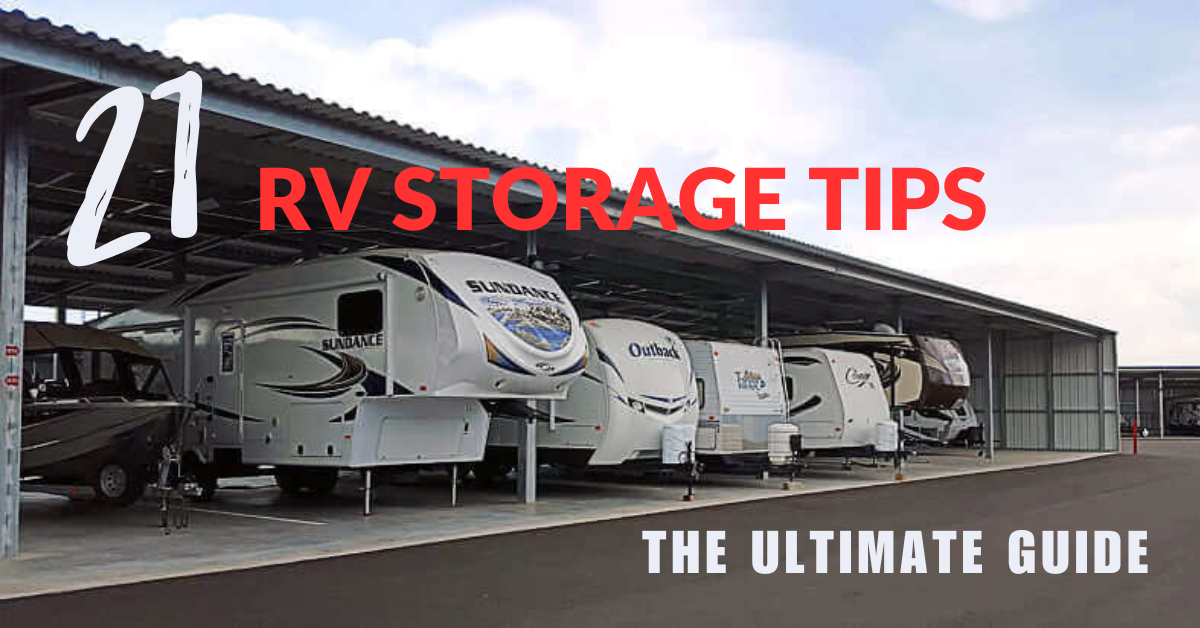Introduction
When it comes to owning an RV, proper storage is crucial for maintaining its pristine condition. Whether you’re a seasoned traveler or a first-time RV owner, implementing effective RV storage tips will help protect your investment and ensure that your rig is ready for your next adventure. In this comprehensive guide, we will provide you with 21 invaluable tips that cover every aspect of RV storage, ensuring your rig remains in top condition for years to come.
1. Find the Perfect Storage Spot
Choosing the right storage location for your RV is the first step to ensuring its longevity. Look for a secure facility that offers covered or indoor storage options. This will protect your rig from the elements and minimize exposure to harsh weather conditions.
2. Clean and Prep
Before storing your RV, give it a thorough cleaning, both inside and out. Remove all perishable items, vacuum, and wipe down surfaces to prevent any potential damage or unwanted pests during storage.
3. Conduct a Maintenance Check
Perform a comprehensive maintenance check on your RV before storing it. Inspect the engine, tires, brakes, and all mechanical components to address any issues and avoid surprises when you’re ready to hit the road again.
4. Protect the Exterior
Invest in a high-quality RV cover to shield your rig from UV rays, dust, and other environmental factors. Ensure the cover fits properly and is securely fastened to prevent any potential damage. Here are some tips to protect your RV’s exterior.
5. Tire Care
To prevent flat spots and preserve tire life, inflate your RV’s tires to the manufacturer’s recommended pressure and consider using tire covers to shield them from the sun’s harmful rays.
6. Battery Maintenance
If storing your RV for an extended period, disconnect the batteries to avoid drainage. Alternatively, you can invest in a battery maintenance device that will keep your batteries charged and in optimal condition.
7. Fluid Maintenance
Before storage, change the oil and filters, and consider adding a fuel stabilizer to the tank to prevent fuel degradation. Additionally, flush and add antifreeze to the plumbing system to protect against freezing temperatures.
8. Pest Prevention
To keep unwanted critters away, inspect and seal any potential entry points in your RV, such as vents, exhausts, and openings. Use rodent repellents and set traps if necessary.
9. Ventilation
Proper airflow is crucial for preventing mold and mildew buildup inside your RV. Open vents or windows slightly to allow for circulation while keeping bugs out by using mesh screens.
10. Interior Protection
Cover your RV’s furniture and upholstery to shield them from dust and sunlight. Consider using dehumidifiers or moisture absorbers to maintain optimal humidity levels and prevent mold growth.
11. Refrigerator Care
Clean and defrost your refrigerator, leaving the doors slightly ajar to prevent odors and mildew. Place an open box of baking soda inside to absorb any remaining odors.
12. Drain and Flush
Empty and clean all holding tanks thoroughly, including the black, gray, and freshwater tanks. Add RV-safe antifreeze to prevent any residual water from freezing and causing damage.
13. Roof Inspection
Check your RV’s roof for any signs of damage, such as cracks or leaks. Repair any issues promptly to prevent water intrusion during storage.
14. Awning Maintenance
Clean and dry your RV’s awning before storing it. Ensure it is fully retracted and secured to avoid damage from wind or inclement weather.
15. Slide-Outs and Jacks
Retract and secure slide-outs and leveling jacks to prevent unnecessary stress on these components during storage.
16. Security Measures
Install additional security features, such as motion sensor lights, an alarm system, or wheel locks, to deter theft and protect your RV while in storage.
17. Regular Checkups
Periodically visit your stored RV to inspect for any signs of damage or issues. This will allow you to address problems promptly and avoid potential long-term damage.
18. Insurance Coverage
Review your RV insurance policy to ensure it covers storage-related damages or theft. Consider adding comprehensive coverage specifically tailored for storage periods.
19. Documentation and Inventory
Keep a detailed inventory of items stored in your RV and take photographs of its condition before storing it. This documentation will be valuable for insurance purposes and ease the retrieval process.
20. Maintenance Schedule
Create a maintenance schedule for your RV, including regular inspections and servicing. Following a routine will help you stay on top of maintenance tasks, ensuring your rig stays in excellent condition throughout its lifespan.
21. Prepare for Reuse
Before hitting the road again, carefully inspect and test all systems and components of your RV. Check the tire pressure, brakes, lights, and fluid levels. Make sure everything is in proper working order before embarking on your next adventure.
Conclusion – RV Storage Tips
By implementing these 21 RV storage tips, you are well on your way to maintaining your rig in top condition. Proper storage, maintenance checks, and preventive measures will safeguard your investment and make your future adventures worry-free. Remember, a well-cared-for RV is a reliable and comfortable home on wheels, ready to take you on unforgettable journeys whenever you’re ready to hit the road again.
